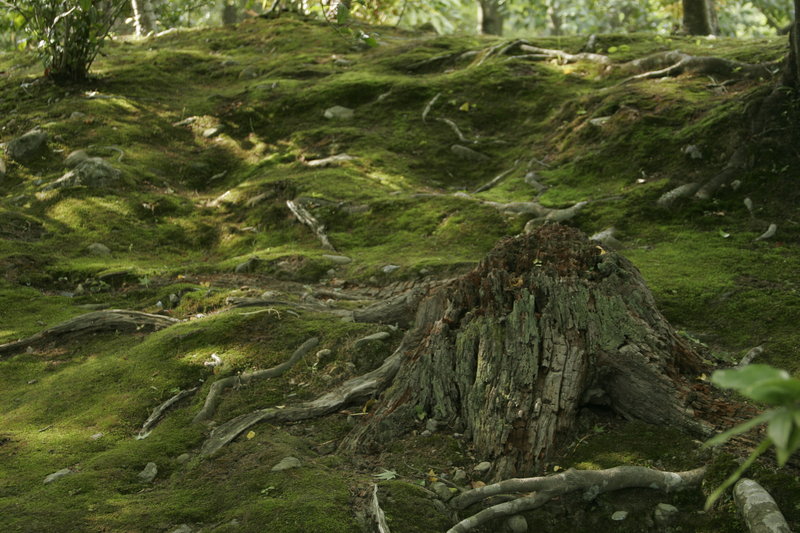Moving away from the pond, this image shows two other features of Zen gardens. The first is that the ground cover is moss; Western gardens tend have little ground cover, and what there is is generally grass. I am not sure whether the ground cover in Buddhist gardens is moss because the mountains are cool, damp, and shaded, or whether the temples are located at the foot of the mountains because they are cool and shaded with a ready supply of water. At any rate, the ground cover is always moss, and it gives a nice uniform greenness and weed prevention that mulch just does not accomplish. It is not entirely maintenance free, however: sunnier areas seem to have splotchier moss, and I think the edge of Tenryuji’s island had recently been re-sodded with moss.
The second feature, by no means uniform, is prominent stumps. The tree in this picture looks like it was probably intentionally cut, and no attempt was made to hide the stump; given the height of the stump and the fact that Tenryuji’s garden has a number of these stumps, it was probably intended as a feature of the garden. Perhaps this is to remind the viewer that death is part of life. Or perhaps the moss and decay present a lot of visual interest.
 Moss and a dead tree, Tenryuji4 / 22 |